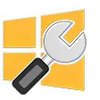GUI frontend for the Windows bcdedit command line utility
GUI frontend for the Windows bcdedit command line utility
Vote: (33 votes)
Program license: Free
Developer: Boyans
Version: 0.9.3
Works under: Windows
Vote:
Program license
(33 votes)
Free
Developer
Version
Boyans
0.9.3
Works under:
Windows
Pros
- No need for command line
- Includes all features attached to traditional BCD tools
Cons
- CLI pros may find it limiting
Visual BCD Editor is a power user utility that allows you to edit Windows' Boot Configuration Data settings without having to resort to the command line. While it doesn't require users to drop to a CLI prompt, it does include all of the features that a TUI-based tool would have offered.
Users who dual-boot their computers will find that it supports multiple operating systems. They can select a primary Windows partition in addition to one that boots OS X. This makes Visual BCD Editor an ideal option for those who run Microsoft Windows on an Apple-branded computer.
Perhaps most impressive is its support for several popular Linux distros. If you've created a separate partition to boot Linux on the same machine you use Windows on, then you can select it with Visual BCD Editor and you'll be able to start from it the next time you reset your PC. It supports Ubuntu and Fedora out of the box, which means a majority of dual booters shouldn't have any issues with the software.
At times, Windows can become confused when working alongside other operating systems. Visual BCD Editor can automatically repair the partition tables and boot sectors attached to HDD devices that run more than one installation. It might even be able to repair systems that have multiple partitions all designed to boot different versions of Windows.
Best of all, Visual BCD Editor can run inside of a virtual machine, so you can use it to manage hard disk images. If you have hardfiles or Disk Copy image files, then Visual BCD Editor will simply treat them as genuine hardware.
Pros
- No need for command line
- Includes all features attached to traditional BCD tools
Cons
- CLI pros may find it limiting




